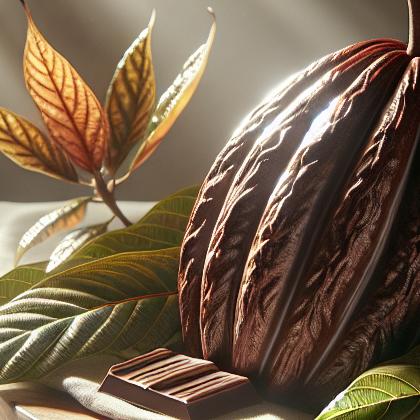Showing results for 'Cacao'
close
Cacao

Theobroma cacao also cacao tree and cocoa tree, is a small (4–8 m (13–26 ft) tall) evergreen tree in the family Malvaceae, native to the deep tropical regions of Central and South America. Its seeds, cocoa beans, are used to make cocoa mass, cocoa powder, and chocolate.
Cacao Pairs With:
Food Item
Flavor Affinity Level

Did you know there are 210 food flavor pairings in my database for Cacao available. What you are seeing above is a random list of 30 items which pair with Cacao.
For the entire list, beautifully formatted, enter your email address and click the download button below, then I'll email it to you as a PDF.
Cacao Properties:
| Food Property | Type | Description |
|---|---|---|
| Flavor Profile | Sweet | Cacao beans have a slightly sweet taste, especially when combined with sugar in chocolate products. |
| Bitter | Cacao beans have a naturally bitter taste, which is often balanced out with sugar in chocolate products. | |
| Umami | Cacao beans do not have a strong umami flavor profile. | |
| Texture | Dryness | Cacao beans are typically dry in texture, especially when used in baking or cooking. |
| Nutritional Value | Macronutrients | Cacao beans are high in healthy fats, carbohydrates, and protein. |
| Micronutrients | Cacao beans are rich in minerals like iron, magnesium, and potassium. | |
| Phytochemicals | Cacao beans are packed with antioxidants and flavonoids, which have numerous health benefits. | |
| Color | Natural Pigments | Cacao beans have a dark brown color due to the natural pigments present in the beans. |
| Aroma | Volatile Compounds | Cacao beans have a rich and complex aroma, with notes of roasted nuts, coffee, and fruits. |
| Chemical Composition | Acidity/Alkalinity (pH) | Cacao beans have a slightly acidic pH level, which contributes to their unique flavor profile. |
| Cooking Behavior | Heat Conductivity | Cacao beans have good heat conductivity, making them ideal for use in baking and cooking. |
| Water Retention | Cacao beans do not retain water well, which is why they are typically used in dry forms like cocoa powder or chocolate bars. |
Food Pairing App - Version 1.2.0
